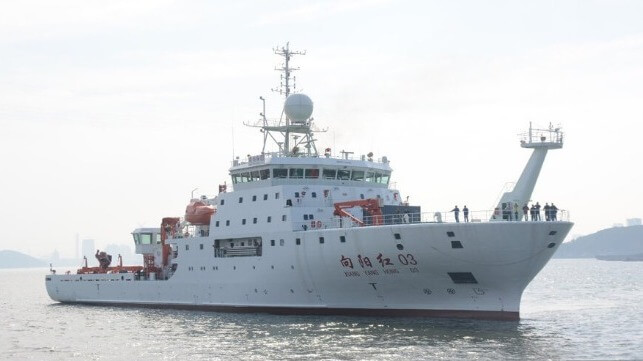Sri Lanka has ignited a geopolitical firestorm by imposing a one-year ban on Chinese research vessels entering its ports and conducting research in its exclusive economic zone (EEZ). This move, announced on January 1st, comes after months of mounting pressure from India and the United States, both wary of China’s expanding research fleet in the Indian Ocean.
The use of Sri Lankan waters and ports by Chinese research vessels has been a contentious issue for years. India, a significant economic and political partner for Sri Lanka, has repeatedly expressed concerns about the vessels’ potential impact on regional security. These concerns stem from suspicions that the seemingly scientific vessels may be equipped with dual-use technology, capable of gathering valuable intelligence under the guise of research.
The incident highlighting this tension involved the Shiyan 6, a Chinese research vessel that docked in Sri Lanka in 2023 to conduct “multidisciplinary observations.” While China maintains the vessel’s scientific purpose, its capabilities, including advanced dish antennas, raised eyebrows in India and the West. The presence of another Chinese vessel, the Xiang Yang Hong 3 (see the cover photo), slated for a five-month Indian Ocean research trip this month, proved the final straw for Sri Lanka, ultimately leading to the current ban.
This decision underscores the complex strategic interplay in the Indian Ocean. India, facing an assertive China on its doorstep, views these research vessels as an encroachment on its maritime domain. The US, with its own concerns about China’s growing influence in the region, has also voiced its disapproval. In contrast, China maintains the vessels are solely for scientific research and accuses India of unwarranted interference in Sri Lanka’s sovereign decisions.
The Sri Lankan government’s one-year ban is a calculated move designed to navigate this delicate geopolitical landscape. It appeaces India and the US by addressing their security concerns while avoiding a complete severing of ties with China, a crucial economic partner.
However, the ramifications of this ban extend beyond Sri Lanka. It could embolden other regional countries to take a firmer stance against China’s maritime activities and further strain Sino-Indian relations. Whether this ban paves the way for a new era of maritime cooperation or simply buys time for Sri Lanka remains to be seen.
One thing is certain: the ripples from this decision will be felt far beyond the shores of Sri Lanka, shaping the future of the Indian Ocean in the years to come.







